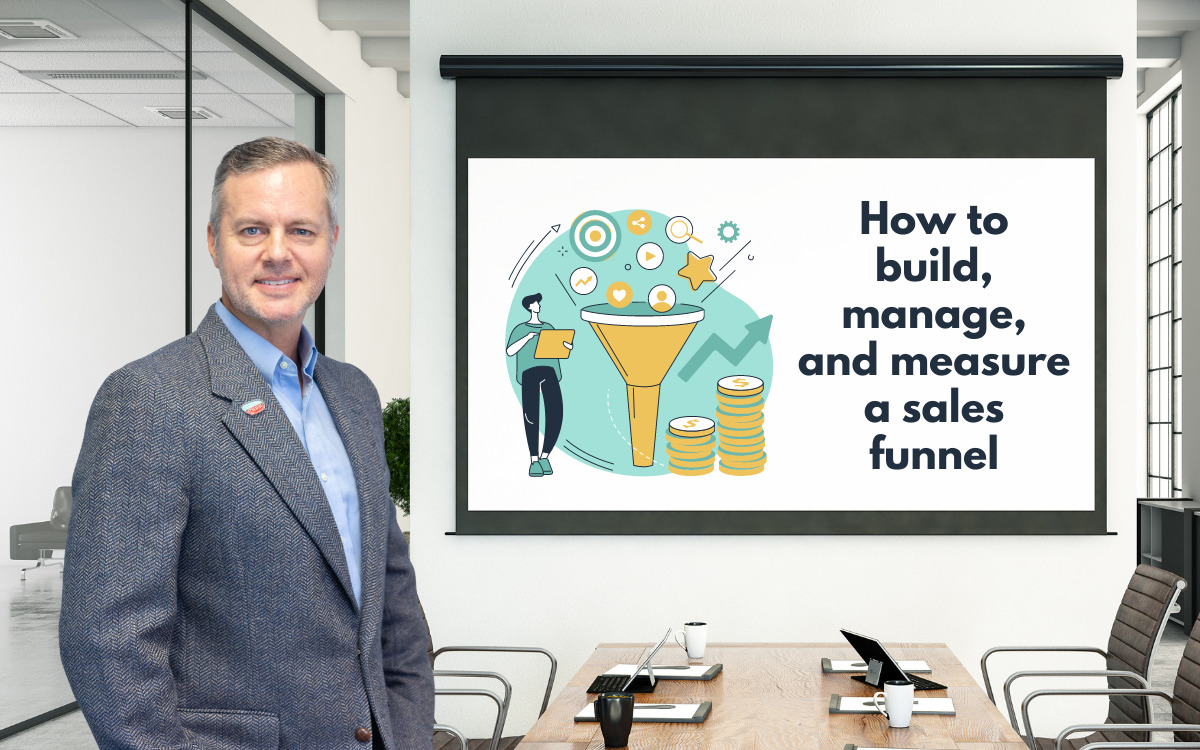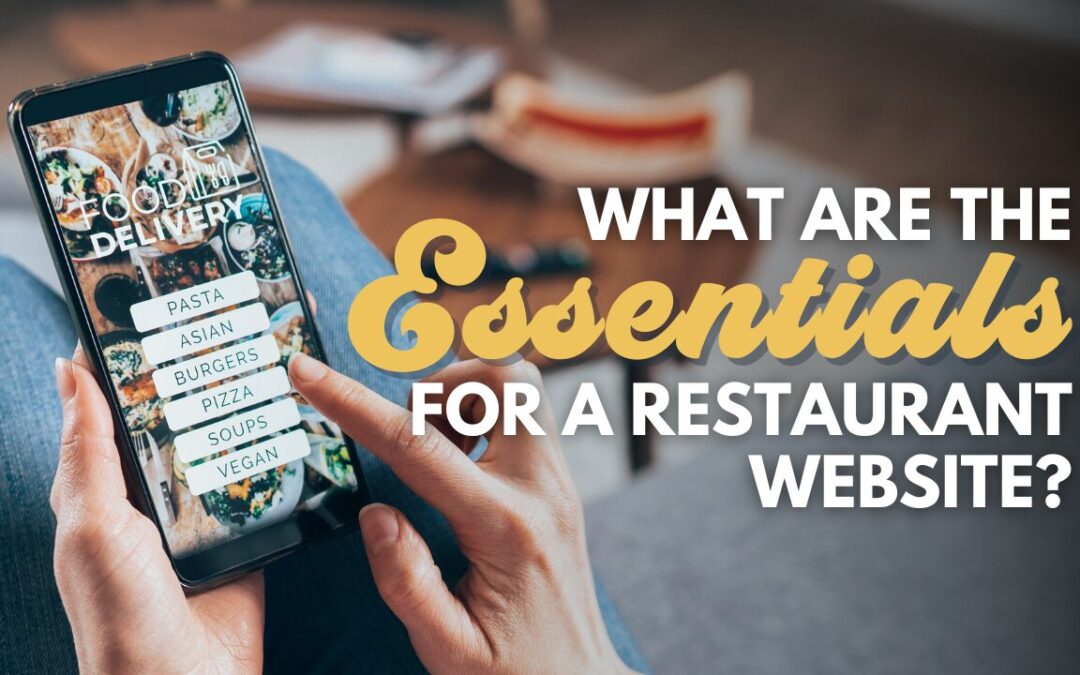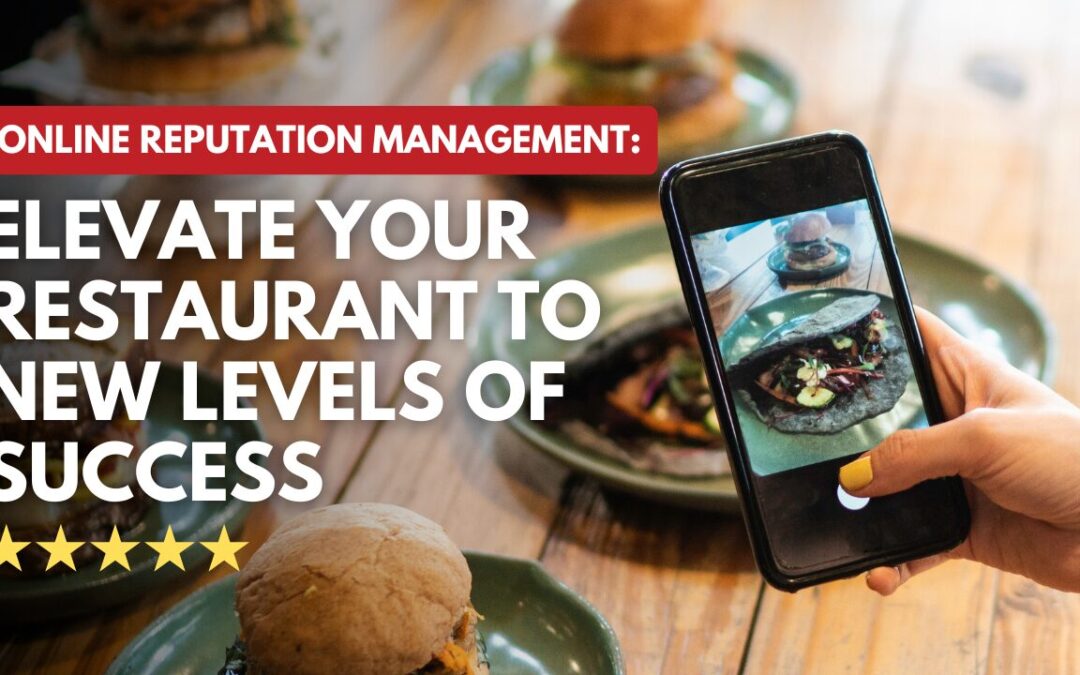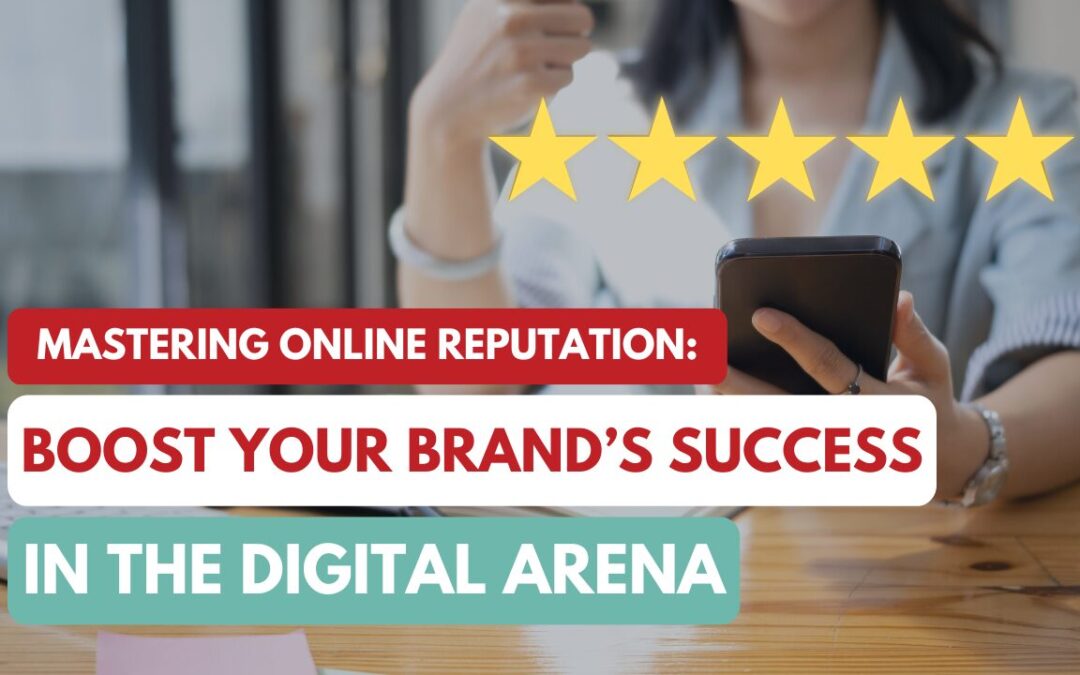- Ensures quality – a funnel approach helps define and standardize marketing and sales activities so that all potential customers are treated fairly and completely.
- Maximizes efficiency – a sales funnel helps businesses focus their actions on people who are more likely to become customers and not waste time or resources.
- Generates customers – the main purpose of a funnel is creating customers, so all activities are focused on that one goal.
- Provides tracking – by having a funnel, a business can track progress at each step of the buying process. Doing so allows for a more nuanced measurement of marketing and sales effectiveness.
- Encourages referral and repeat business – done right, a funnel approach encourages loyal customers to refer new business to an organization because they are happy with how they are treated.
Too many businesses try to make the leap from overall marketing spend to bottom-line sales results, without taking the time to examine each step of the sales process.
A sales funnel helps a business fine-tune activities to optimize the steps along the way without throwing everything out. A marketing campaign may have a great message, but be targeted to the wrong audience. A funnel helps uncover those problems.
There are several different ways to set up a sales funnel and depending upon what you read, there may be four, five, six, or even seven steps in a sales funnel. Here at Country Fried Creative, we have found that a six-step sales funnel tends to work best by providing the right level of detail to get things done. Here’s how you can build, manage, and measure a sales funnel for your business.
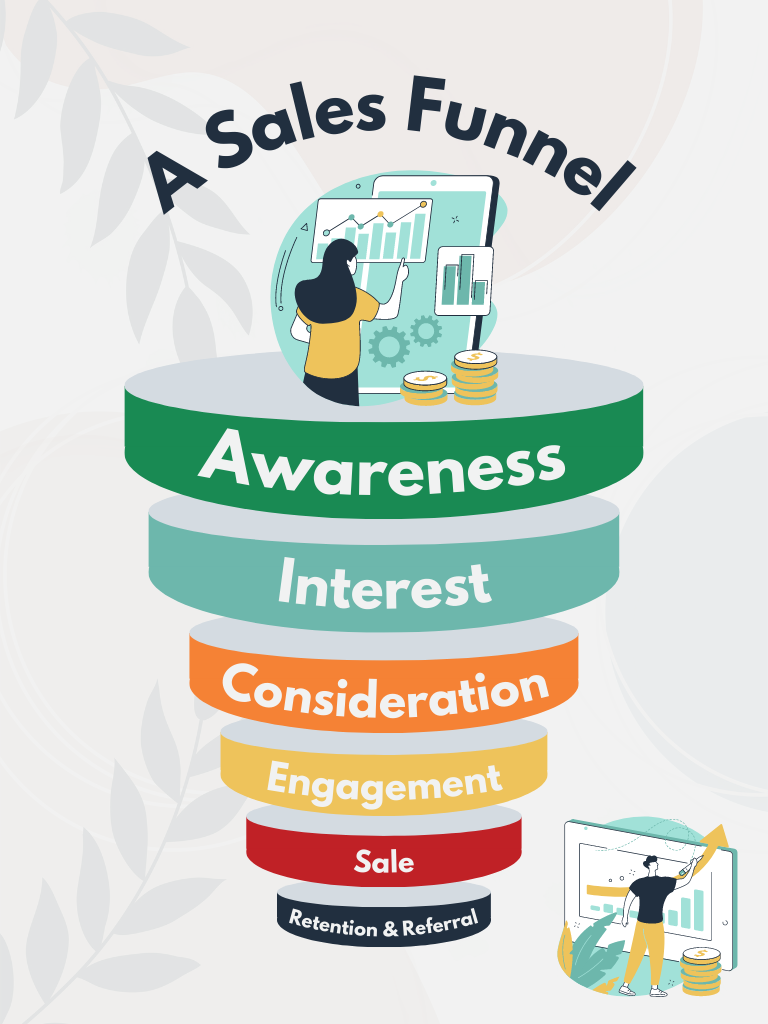
Step 1 – Awareness
Almost all sales funnel models begin with creating awareness, and that’s a natural place to start. This stage of the funnel has the largest number of people, and the goal here is to create general awareness of your products and services.
How to build – Advertising, promotions, outbound email & mail campaigns, word of mouth referrals, and search engine marketing are all ways to develop awareness of your company. Decide who your target market is and then direct marketing activities that are likely to be seen by potential customers.
How to measure it – Awareness is normally measured by reach, online advertising impressions, social media growth, email open rate, website visits, surveys, and other noncommittal indications that someone heard your marketing message.
Step 2 – Interest
If your marketing message resonates with your target audience, then potential customers (prospects) are likely to respond in a way that indicates interest. This is a crucial stage of the sales funnel. How fast and how well you respond to that interest determines whether the prospect considers doing business with you.
How to build it – Speed and relevance are the two main ways to develop a prospect’s interest. Almost all potential customers, particularly in Business-to-Business (B2B) situations, expect a quick follow-up. If you don’t reply quickly enough, they’re likely to move on to another company. Relevance means providing the information the prospect wants to know.
How to measure it – The best way to measure interest is to consider the conversion rate. A conversion is a marketing term that is simply someone responding to a call-to-action (CTA). When that happens, we say that the opportunity has “converted”. Let’s say that you ran an online ad that was seen by 10,000 people (impressions) and 200 people clicked the ad (conversion) for more information. The conversion rate would be 200 / 10000 = 2 %. The higher the conversion rate, the better the effectiveness of the campaign.
Step 3 – Consideration
Sometimes called “evaluation”, this is the step in which both buyer and seller are evaluating the specific details of a potential transaction. It’s important to realize this is a two-way transaction. Just because a buyer has interest, doesn’t mean they can afford your solution. In like manner, the potential customer wants to know that you’re the right fit for them. During this step, details are considered such as features, functions, price, timeline, and other criteria.
How to build it – Anticipating questions and knowing what a potential customer wants is how to quickly move through the consideration stage. This is where knowing your customer really shines. As you help the potential customer, take the time to determine whether they are a good fit for your company. Does the prospective customer have a clearly defined need, budget, and interest? Don’t be afraid to let a prospect know that you can’t help them if it’s not a good fit. In order to work, both the buyer and selling have to have the potential to be happy with a possible business transaction or sale.
How to measure it – Most of the time an evaluation stage is handled automatically through self-service documentation and forms or through an in-person sales representative. This should be tracked accordingly and noted as the number of “qualified prospects” that are generated. A qualified prospect is someone who has interest AND meets the criteria you’ve set for a customer. If that’s the case, then they are “qualified” to be a customer. Qualified prospects are normally measured as an absolute number. Continuing from the previous example, let’s say you have 200 interested prospects. After a sales follow-up, you might determine that only 50% of them are qualified to be customers due to budget. The number of qualified prospects would be 100. This is a very important metric to track, and many times a marketing campaign is measured on the number of qualified prospects that are generated. At this point in the process, marketing is starting to transition into sales.
Step 4 – Engagement
This is when both buyer and seller are committed to a potential transaction with an intention to move forward. In other words, the product or service is of interest to the buyer and the buyer is qualified to make a purchase. Negotiation, if the terms of the transaction are negotiable, happens at this stage. If the transaction requires a salesperson, then this is when objections are handled. Objections usually come in the form of timing, terms, and cost. If this is an automated transaction such as an e-commerce purchase, then this is when someone adds something to their shopping cart.
How to build it – The best way to build engagement is to be prepared with a smooth, customer-centric sales process. If the process is automated, make sure it’s easy for the customer to buy. If the process is an in-person transaction, make sure salespeople are trained to properly anticipate and handle objections professionally. This is the final step to a sale, so it’s imperative to make it as easy for the customer to say “yes” as possible.
How to measure it – Engagement is usually measured in terms of quotes, contracts, or shopping carts adds. Depending on the type of product or service, what’s measured should be the last step before a sale is made, whatever that step may be. Expanding our example from above, let’s say that of the 100 qualified prospects, 50% of them are ready to buy and give a verbal commitment to do so. Our sales funnel is down to 50 potential customers.
Step 5 – Sale
The moment of truth is the actual sales transaction itself. If the potential customer signs the contract, puts down a deposit, or buys your product outright, then a sale is made – congratulations! In sales, we often referred to this as a “close”. Everything else in the sales funnel leads up to this step of the process.
How to build it – The best way to maximize closed sales is to make it easy for the customer to buy from you. If every step along the sales funnel is done properly, then a closed sale should be the natural result. When an engaged or interested customer doesn’t “pull the trigger” on a sale, then obviously there was some objection or concern that wasn’t uncovered or satisfied. In a service business, one of the most common barriers to a closed sale is the lack of a “compelling event”. Many potential customers simply go on “fishing trips” to survey the market without having an immediate interest to buy. Be aware of that and politely help people without getting too invested in them.
How to measure it – The classic measurement of sales effectiveness is the close rate. Let’s say that out of the 50 customers who received a contract, 40 of them actually signed the contract, then the close rate would be 80% (which is a typical close rate for a service business). Other measures of sales might include – average size of transaction, average time to close, average customer acquisition cost (CAC – which is really an overall measure of marketing effectiveness).
Step 6 – Retention and Referral
One might think that a closed sale is the final step, but that’s not entirely true. The best customers are repeat customers who also refer other potential customers to you. Be sure to target some of your marketing activity towards existing customers to retain them and generate referrals.
How to build it – A happy customer is your best opportunity for another sale. Keep your customers happy and they will be the source of new sales. Reaffirm their decision to stay with your company by using loyalty programs, thank you campaigns, and referral discount programs.
How to measure it – There are several ways to measure customer retention and referrals. CTV is the Customer Life-Time Value and measures the amount of revenue generated over the lifetime of a customer relationship. It considers all sales transactions by customers. CRR is the Customer Retention Rate and refers the how many customers you retain over a certain time period. CRR is measured by the formula CRR = ((E-N)/S x 100, where E = number of customers at the end, S is the number of customers at the start, and N = number of new customers acquired during the time period. Let’s say that you start the year with 1000 customers, end the year with 900 customers, and add 50 new customers. The CRR = ((900-50)/1000) x 100 = 85%. Referrals are often measured in terms of absolute numbers or as a average rate based on total number of clients.
As you can see, there’s a lot more to marketing and sales than simply advertising and hoping for the best. Consider developing a sales funnel that’s very deliberate about generating sales and provides measurements along the way. If your car stopped working, you wouldn’t scrap it – you’d want to know why it’s not working. The same applies to marketing. Having a sales funnel gives you an opportunity to define your sales process, measure effectiveness along the way, and provide an opportunity to fine-tune what you’re doing to build a loyal customer base.
If we can be of service, please reach out. We would be happy to help.

